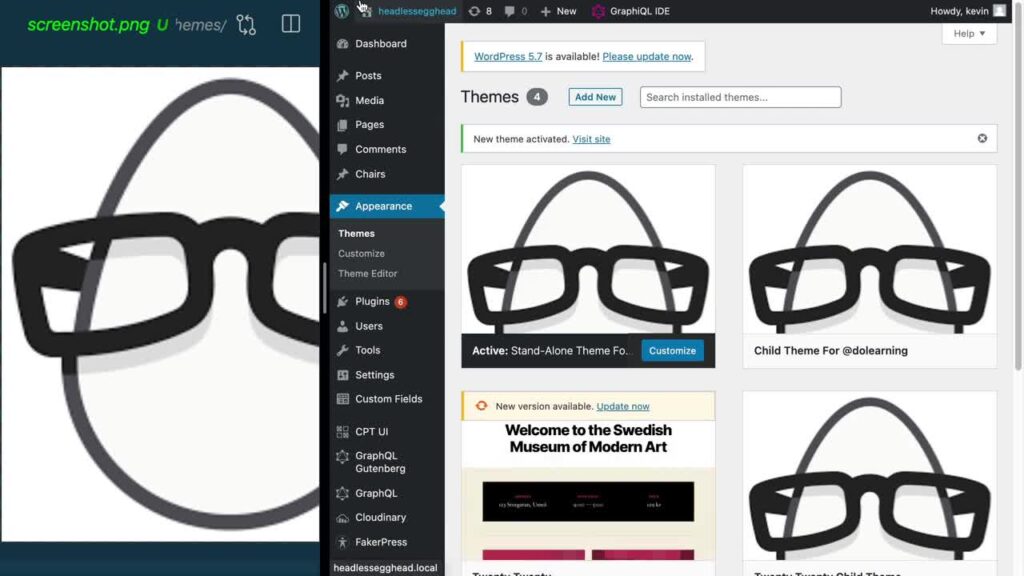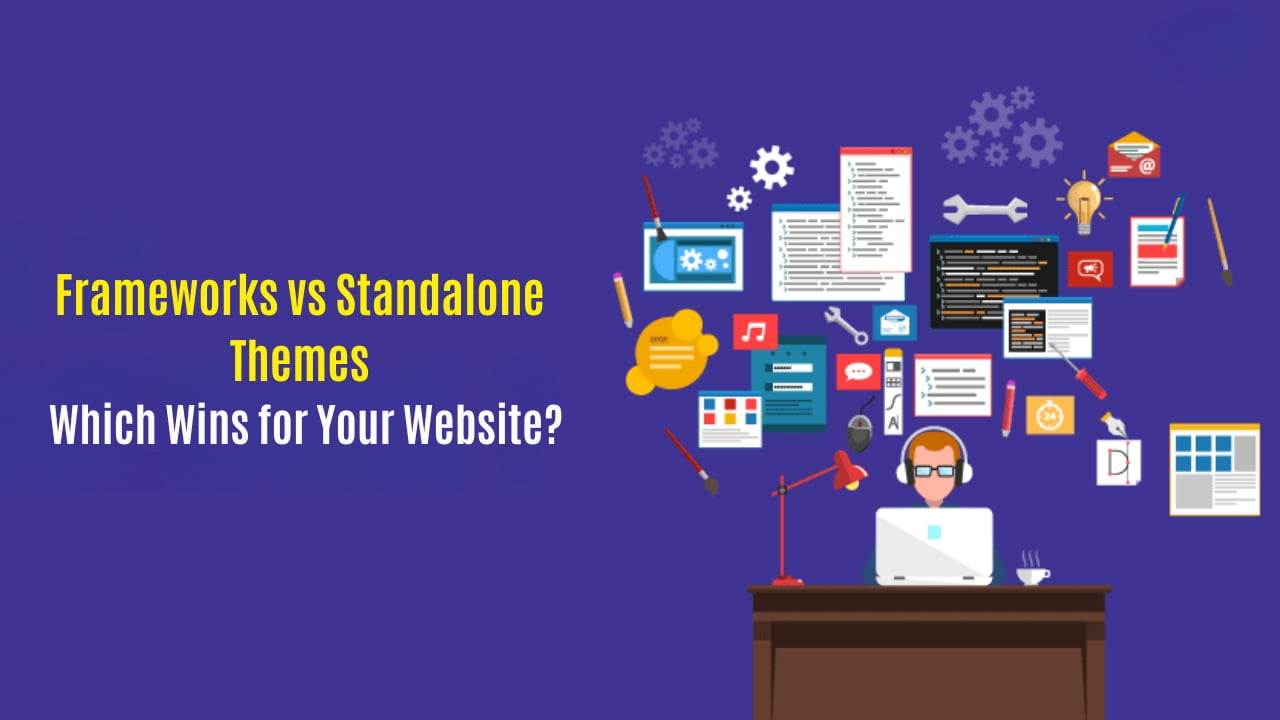Frameworks vs Standalone Themes: Choosing the right theme for your website is crucial for its success. Whether you opt for a theme framework or a standalone theme, each option offers distinct advantages that cater to different needs and preferences. Let’s explore the intricacies of both to help you make an informed decision.
Introduction
When setting up a website, one of the earliest decisions you’ll face is selecting a suitable theme. Theme frameworks and standalone themes represent two primary approaches to website design and development. Understanding their differences and strengths can significantly impact your site’s performance, customization capabilities, and overall user experience.
Understanding Theme Frameworks

What is a Theme Framework?
A theme framework serves as a foundation for building themes. It typically includes a robust codebase with core functionalities, layout options, and design elements. Developers use frameworks to create child themes that inherit the parent framework’s features while allowing for extensive customization.
Advantages of Theme Frameworks
- Flexibility and Customization: Theme frameworks offer unparalleled flexibility through child themes, allowing developers to modify and extend functionalities without altering the core framework.
- Built-in Functionality: They come with built-in features such as SEO optimization, responsive design, and integration with popular plugins.
Top 10 Responsive WordPress Themes for 2024
Exploring stand-alone Themes

What are stand-alone themes?
Standalone themes are complete themes that do not require a parent framework. They are designed with specific functionalities and aesthetics in mind, catering to various industries and niche markets.
Advantages of Standalone Themes
- Simplicity and Ease of Use: Standalone themes are straightforward to install and configure, making them ideal for users with limited technical expertise.
- Specific Design Focus: They often target specific niches or industries, offering tailored design elements and functionalities that meet specific user needs.
Comparison Based on Customization

Customization Options in Theme Frameworks
Theme frameworks excel in customization with features like hooks, filters, and child themes. Developers can modify layouts, add custom CSS, and integrate third-party extensions seamlessly.
Customization Options in Standalone Themes
Standalone themes typically provide customization through theme options panels and integration with popular page builders like Elementor or WPBakery. Users can adjust colors, fonts, and layouts using intuitive interfaces.
Also Read: Top 10 Customizing WordPress Themes Tricks You Need to Know
Performance Considerations
Performance of Theme Frameworks
Theme frameworks are known for their efficient code structure, which enhances website performance by minimizing resource usage and optimizing loading times.
Performance of Standalone Themes
Standalone themes prioritize streamlined design and minimalism, contributing to faster loading speeds and better user experience on various devices.
SEO Friendliness

SEO Features in Theme Frameworks
Theme frameworks often include built-in SEO features such as schema markup, breadcrumb navigation, and compatibility with SEO plugins like Yoast SEO or Rank Math.
SEO Features in Standalone Themes
Standalone themes focus on clean code and fast loading times, essential factors for SEO success. They integrate well with SEO best practices and emphasize mobile responsiveness.
Support and Updates

Support in Theme Frameworks
Theme frameworks benefit from active developer communities, offering robust support forums, regular updates, and bug fixes to maintain performance and security standards.
Support in Standalone Themes
Standalone themes provide dedicated support channels through theme developers or marketplaces, ensuring timely assistance and updates to address user concerns and improve functionality.
Cost Considerations

Cost of Theme Frameworks
Theme frameworks may involve initial purchase costs for the framework itself, plus ongoing expenses for child themes, plugins, and extensions. However, they often provide long-term value through continuous updates and support.
Cost of Standalone Themes
Standalone themes typically follow one-time or subscription-based pricing models. Additional costs may arise from purchasing premium plugins or extensions to enhance functionality.
User Experience and Interface Design

User Experience in Theme Frameworks
Theme frameworks prioritize consistency across themes and child themes, offering users a seamless browsing experience with intuitive interfaces and usability enhancements.
User Experience in Standalone Themes
Standalone themes focus on niche-specific designs, enhancing user experience through tailored layouts, intuitive navigation, and readability optimizations.
Security Features

Security in Theme Frameworks
Theme frameworks undergo regular code audits and updates to address vulnerabilities, ensuring secure coding practices and encryption for enhanced website security.
Security in Standalone Themes
Standalone themes implement security measures such as HTTPS protocols, protection against common exploits, and adherence to WordPress security guidelines.
Choosing the Right Option for Your Website
When deciding between theme frameworks and standalone themes, consider factors such as your website’s goals, technical expertise, and budgetary constraints. Evaluate each option’s customization capabilities, performance attributes, and support infrastructure to determine the best fit for your specific needs.
May You Like: Free vs. Premium WordPress Themes: Which Is Right for You?
Conclusion
In conclusion, both theme frameworks and standalone themes offer distinct advantages, depending on your website’s requirements. Theme frameworks provide extensive customization and scalability, making them ideal for developers and larger projects. On the other hand, standalone themes offer simplicity and niche-specific functionalities that cater to specific industries and user preferences. Ultimately, the choice between theme frameworks and standalone themes hinges on balancing customization needs, performance expectations, and long-term support considerations.
FAQs
What are the main differences between theme frameworks and standalone themes?
Theme frameworks provide a foundation for building themes with extensive customization options, while standalone themes are complete packages designed for specific uses.
How do theme frameworks support customization compared to standalone themes?
Theme frameworks allow developers to create child themes and extend functionalities through hooks and filters, whereas standalone themes offer customization through built-in options panels and page builders.
Are standalone themes better for SEO compared to theme frameworks?
Standalone themes focus on clean code and fast loading times, which are beneficial for SEO, while theme frameworks offer built-in SEO features and compatibility with SEO plugins.
What are the typical costs associated with theme frameworks and standalone themes?
Theme frameworks may involve higher initial costs but provide long-term value through updates and support. Standalone themes generally follow one-time or subscription-based pricing models, often supplemented by additional costs for premium plugins or extensions.
How can I ensure security when using either theme frameworks or standalone themes?
Both theme frameworks and standalone themes prioritize security through regular updates, adherence to best coding practices, and the implementation of secure protocols like HTTPS. Choosing reputable developers and keeping themes and plugins updated are crucial for maintaining website security.

